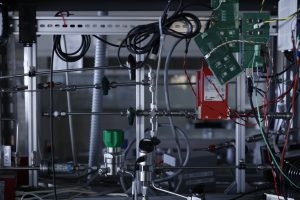The Tokyo University of Science is developing a system for homes equipped with solar power generating equipment and power storage units that automatically controls both the solar power generating equipment and power storage devices. The automated controls take into account the amount of electricity consumed and the electricity rates at different times of the day as well as the purchase price for excess electricity generated by solar power installations. In short, this energy management system maximizes the value sought by the user without human intervention. Our research has made use of deep reinforcement learning, a type of machine learning, to learn through repeated simulations of millions or even billions of years’ worth of situations, in order to maximize pre-set rewards such as economic efficiency or environmental impacts. This is how the system learns specific load patterns and also autonomously learns and optimizes control methods, rather than applying defined controls for each selected pattern. In 2021, researchers installed solar power generation equipment and residential power storage units at our research facility and began demonstration tests using simulated power loads based on household power consumption data. The purpose is to verify whether simulation models and real equipment behave in the same ways. In other words, the researchers build a digital twin that reproduces in a digital space data obtained in the real world. Then, they run the simulation in the real environment and incorporate the errors they find back into the simulation, and they run the updated simulation again in the real environment. By repeating this cycle, they slowly bridge the gap between the behaviors of the simulation models and real equipment.

The University is engaged in many other research projects in the solar power field, in addition to research into solar power control systems. One project of particular interest is looking at technology to detect faults remotely and technology to detect abnormalities using an AC impedance method. The technology works by applying a tiny voltage to the solar cells from a DC converter and calculating the impedance from the current response. Abnormalities are then spotted by comparing the calculated impedance with baseline data. Abnormalities can be detected on a per-string or per-panel basis. The technology can find solar cell cracks and potential-induced degradation (PID) as well as faults from open circuits or corrosion. The technology can be packaged in the form of an external DC converter and measuring device, but it can also be implemented by installing software on the DC converter contained in the power conditioner (PCS). Compared to the electroluminescence (EL) method, this method is about 10 times more accurate and can detect minor defects and signs of imminent faults. The measurement itself takes only one to two seconds, so the system can be set to measure once a day to routinely confirm the solar panels’ operation.

■ Main research themes